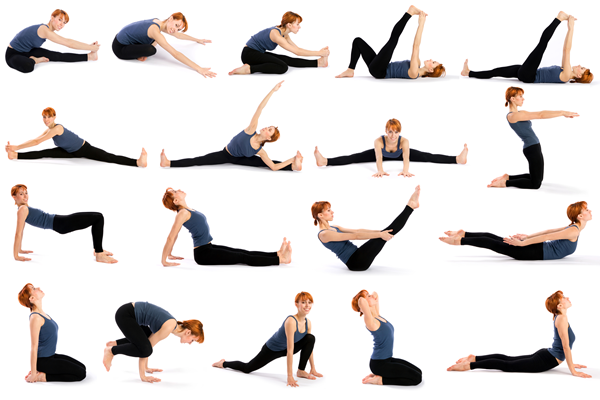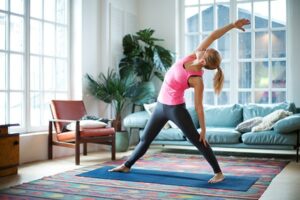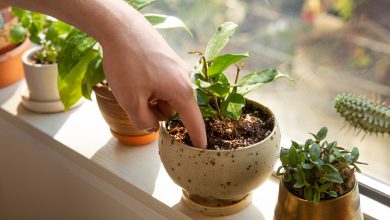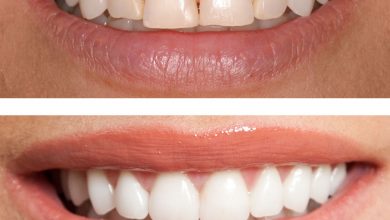
How to do yoga at home for beginners – Yoga is a beautiful practice that promotes physical strength, flexibility, and mental well-being. Whether you’re a complete beginner or an experienced yogi, practicing yoga at home offers convenience and flexibility.EnoughInfo,com
There’s a lot to be said about going to a local yoga studio. The instructor provides personalized feedback, you meet other yogis in your community, and you learn more about the practice from those around you. These are all significant advantages that should not be overlooked or taken lightly.
If you don’t live near a studio, or if you’re the sort who is always on the go and finds it difficult to squeeze in a regular session, doing yoga at home can help you incorporate the practice effortlessly into your life. You don’t have to wait for a certain class time or commit to an hour-long session, for example; you don’t have to pack a bag, drive to a studio, or waste time small-talking with other yogis. Simply pick a time and length of session that works for you, and then get your “om” on at home.
Read Also: How to lose weight without exercise(The Ultimate Guide)
What Exactly Is Yoga?
According to the National Institutes of Health National Centre for Complementary and Integrative Health, yoga is a spiritual and physical practice rooted in Indian philosophy that has been practiced for thousands of years. Yoga comes in a variety of styles, ranging from peaceful, meditative sessions to more physically intensive versions. Mind-body exercises often include a series of physical poses paired with deep breathing methods.
“Defining ‘yoga’ is a bit like trying to define a grand concept like spirituality or culture,” Rayburn explains. “I’ve always been drawn to a dynamic definition that resonates differently depending on who you ask when you ask it, and where you ask it.” Yoga can be defined as any internal or external practice that weaves intention, knowledge, and affirmative agency.”
In this article, we will guide you through the essential steps to start your yoga journey in the comfort of your own home. So roll out your mat, find a quiet space, and let’s begin!
Discover the Serenity Within A Beginner’s Guide to Practicing Yoga at Home
Step 1: Set the Right Environment
Create a tranquil and inviting space for your yoga practice. Choose a clean, clutter-free area in your home where you can move freely. Decorate the space with elements that inspire you, such as candles, plants, or soothing music. Ensure the room is well-ventilated and at a comfortable temperature.

Step 2: Gather Your Equipment
Yoga doesn’t require much equipment, but there are a few essentials you’ll need. Invest in a good-quality yoga mat to provide cushioning and stability during your practice. Additionally, consider having props like blocks, straps, and blankets handy to assist with modifications and support as needed.
Step 3: Start with Simple Poses
As a beginner, focus on learning foundational yoga poses. Begin with gentle warm-up exercises to awaken your body and gradually move into basic postures such as Mountain Pose (Tadasana), Child’s Pose (Balasana), Downward-Facing Dog (Adho Mukha Svanasana), and Warrior Poses (Virabhadrasana I, II, and III). Follow online videos, and tutorials, or use a beginner’s yoga book as a reference to ensure proper alignment.
Step 4: Breathe and Flow
Sync your breath with your movements to cultivate a sense of mindfulness and relaxation. Practice deep belly breathing, inhaling and exhaling through your nose. As you flow through poses, coordinate each movement with a breath, allowing your breath to guide you through the practice. Remember, yoga is a journey of connecting mind, body, and breath.
Read Also: How To Look Fresh (The Ultimate Guide)
Step 5: Build Consistency and Gradually Increase Duration
Start with shorter sessions, around 15 to 20 minutes, and gradually increase the duration as you become more comfortable and confident. Aim for consistency in your practice, even if it’s just a few minutes each day. Regularity will help you develop strength, flexibility, and focus over time.
Step 6: Seek Guidance and Inspiration
While practicing at home offers independence, it’s beneficial to seek guidance and inspiration from experienced yoga instructors. Many online platforms provide a wide range of yoga classes for beginners. Explore different styles, such as Hatha, Vinyasa, or Yin, to find what resonates with you. Follow along with instructional videos or join virtual live classes for a sense of community and expert guidance.How to do yoga at home for beginners
Step 7: Listen to Your Body
One of the fundamental principles of yoga is honoring and listening to your body’s needs. Pay attention to how you feel during each practice and modify poses or take breaks as necessary. Avoid pushing yourself beyond your limits or forcing your body into uncomfortable positions. Respect your body’s boundaries and progress at your own pace.
Step 8: Cultivate Mindfulness and Relaxation
End your practice with a few minutes of relaxation and meditation. Lie down in Savasana (Corpse Pose) and allow your body to fully relax. Focus on your breath, letting go of any tension or thoughts. Alternatively, you can practice guided meditation or explore various relaxation techniques to calm the mind and promote inner peace.
Beginner Yoga Pose Guide
Try flowing through the sequence below to build a full yoga workout at home.
Balasana (Child’s Pose)
This foundational pose can be soothing and act as an excellent reset during a session. If you need a moment to regroup throughout your flow, you can always return to the child’s pose.
Begin by kneeling on the floor and bringing your big toes together. Sit on your heels with your knees spread wide.
Fold forward and lay your torso between your thighs, exhaling.
For an Extended Child’s pose, place your arms along your thighs or reach your hands out toward the front of your mat.
Adho Mukha Svanasana (Downward Facing Dog)
Because it is an integral aspect of many yoga practices, the downward-facing dog may be one of the first poses you learn in any yoga session. It’s one of the main stances in sun salutations and something you can practice throughout class.
Begin on your hands and knees, with your wrists beneath your shoulders and your knees in line with your hips.
As you root down through your hands, spread your palms and fingers into the mat.
Exhale as you slowly lift your knees off the floor, curling your toes beneath.
Concentrate on stretching your tailbone and elevating your pelvis to the ceiling. Straighten your knees as far as you can without locking out totally. Return your shoulders to your hips.
Read Also: How To Increase Testosterone Naturally(A Complete Guide)
Anjaneyasana (Low Lunge)
Rayburn’s favorite posture, this one is excellent for stretching the lower body and opening up the chest.
Begin in the downward-facing dog position. Exhale as you take a stride forward with your right foot in between your hands, right knee over the right heel.
Lower your left knee to the mat and back up until you feel a slight stretch through the front of your left thigh.
Inhale as you sweep your arms out to the sides and lift your body up, fingers pointing to the ceiling and tailbone drawn down to the floor. Make sure to do the opposite side as well.
Bhujangasana (Cobra Pose)
This pose, which is also used in sun salutations, is useful for improving posture because backbends help to offset prolonged sitting.
To begin, lie face down flat on the mat, palms flat on the mat near your shoulders.
Lift your head and chest off the floor, moving your shoulders back and down as you inhale. Maintain a slight bend in your elbows and keep them close to your sides.
Utkatasana (Chair Pose)
This strong stance is excellent for strengthening the legs, arms, and core.
Stand tall and inhale while raising your arms straight overhead. Your biceps should be slightly ahead of your ears, and your palms should be facing inward.
Exhale by bending your knees and attempting for your thighs to be parallel to the floor.
Maintain the posture for 30 seconds to a minute.
Utthita Parsvakonasana (Extended Side Angle Pose)
This strong and inspiring stance improves balance and strength. Consider using a yoga block if you can’t reach your fingertips all the way to the ground.
To begin, stand tall with your feet about four feet apart. Turn the left foot out 90 degrees and slightly in the right. Place your arms in a “T” shape, palms down.
Bend your left knee till your thigh is parallel to the floor. Hinge your hips to bring your left arm to the floor and rest your left fingertips on the ground or a block.
Extend your right arm over your right ear, palm down, and turn your chest towards that lifted arm. Hold the stance for 30 seconds to a minute before switching sides.
Read Also: 12 Home Remedies For Menstrual Cramps
Eka Pada Rajakapotasana (Pigeon Pose)
This famous yoga pose addresses the lower body and can produce a tremendous stretch. It is great for expanding the hips. Begin slowly and only fold forward if you feel stable once in position.
Begin by getting down on your hands and knees. Slide your right leg forward until it is just outside your right hand. Face the front of the mat with your right shin.
Hips should be squared towards the front of the mat. For further support, place a folded blanket beneath your right side.
Stay upright and breathe into the posture, or lower your chest to the ground while bending forward over your right leg. Repeat on the other side.
Setu Bandha Sarvangasana (Bridge Pose)
This is another common backbend that can assist improve posture and ease lower back discomfort.
Begin by lying on your back on the mat. Keep your knees bent and your feet hip-width apart. Bring your feet closer to your glutes. On the mat, keep your arms flat down your sides.
Lift your hips by pressing through your feet and lifting from the pelvis. You can advance the posture by clasping your hands behind your back on the ground.
Vrksasana (Tree Pose)
This standing yoga pose not only improves balance and coordination but also focuses on posture and alignment. Engage your core to help you stay balanced.
To begin, stand tall with your toes and feet firmly on the floor. Put your hands on your hips and keep your gaze fixed in front of you.
Raise your left foot slowly onto your right shin or thigh while keeping your gaze forward. Breathe while pressing the foot into the leg. Once you’re comfortable, try putting your hands to your heart or stretching them out like branches overhead.
Hold for a few breaths before stepping back down and repeating on the opposite side.
Savasana (Corpse Pose)
This grounding stance is all about relaxation and mental quietness. Consider tucking a rolled-up blanket beneath your knees if you have any strain in your lower back.
How to do it: Lie flat on your back on the mat. If necessary, use a folded blanket to support your head and neck.
Breathe into the stance while keeping your shoulders down and away from your ears.
Read Also: 21 Weight-loss Motivation Tips (2023)
Conclusion
Embarking on a yoga journey at home as a beginner is a beautiful way to nurture your physical and mental well-being. By following these steps and remaining consistent in your practice, you’ll gradually witness a positive transformation in your body and mind. Remember, the essence of yoga lies in the union of breath, movement, and self-awareness.
As you progress on your yoga journey, consider exploring different styles, attending workshops or retreats, and connecting with other yogis in your community. The beauty of yoga is that it is a lifelong practice that continually unfolds, offering new insights and benefits along the way.
Always approach your yoga practice with kindness, patience, and self-compassion. Embrace the process and enjoy the journey, knowing that each time you step onto your mat, you are nourishing your mind, body, and soul. So, roll out your mat, create your sacred space, and let the transformative power of yoga guide you on a path of self-discovery and well-being. Namaste.



